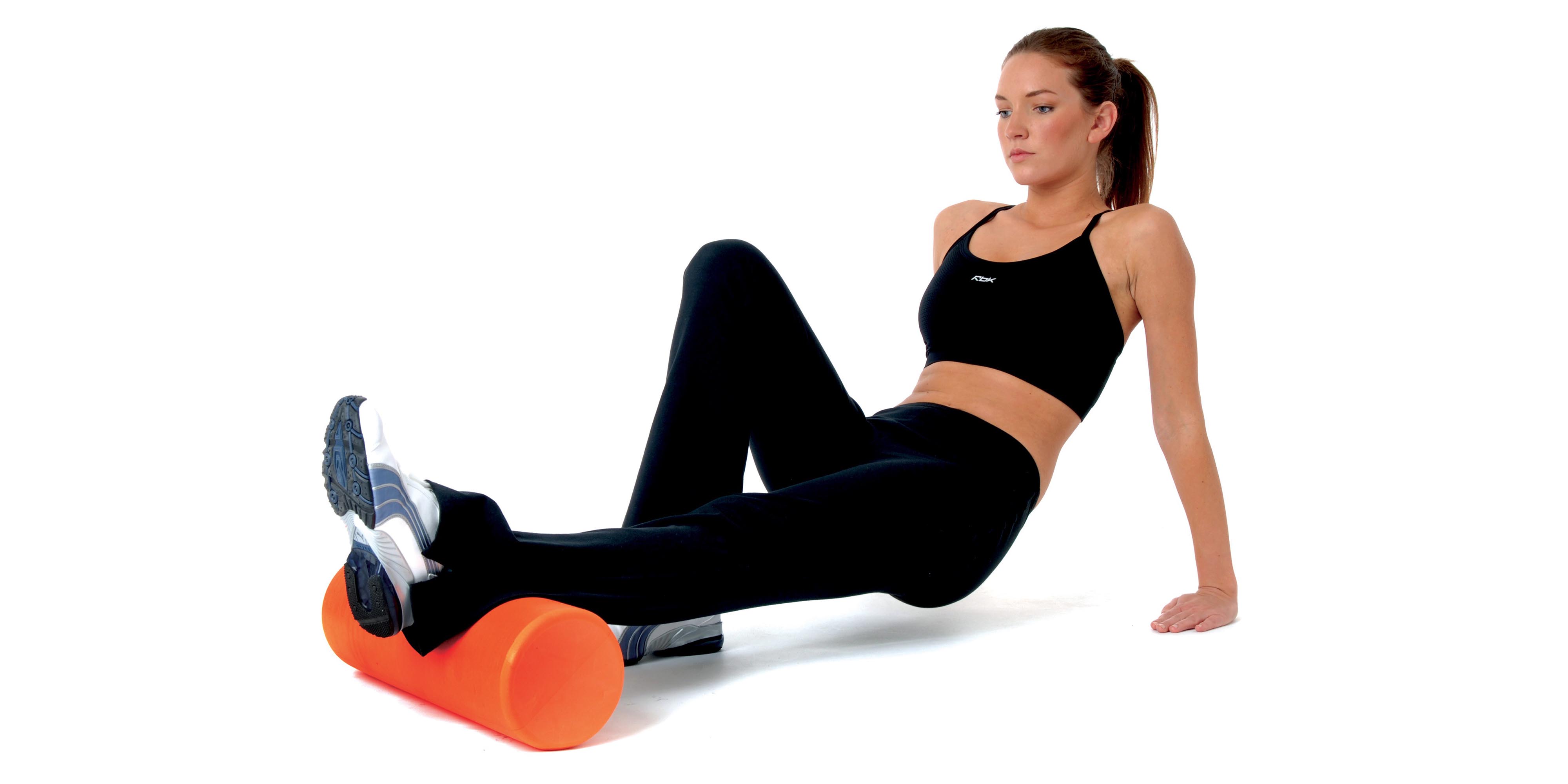If you experience knee pain, low back pain or tightness, or any joint pain while exercising, you may be able to get rid of the pain by targeting muscle tightness with a FOAM ROLLER. Most gyms have them, but it’s worth investing about $18-30 to buy one to use at home as well. This isn’t recommended if you have a true injury (please see a medical professional). While we admit a massage would be ideal for muscle knots/tightness, we don’t always have the time and/or money to see a massage therapist regularly. For this reason, a foam roller has become our new best friend.
Foam roller benefits
A foam roller works similarly to a deep tissue massage: it presses out the knots in your muscle fibers so they can return to optimum length to properly contract. Also, tight muscles can pull your bones/joints out of alignment which could be the main reason you are experiencing pain. Muscle tightness results from lifting weights, sitting sedentary for long periods, poor posture, injury, and/or not stretching. Perhaps one of the most important areas to foam roll is the iliotibial (IT) band, the connective tissue, i.e. fascia, which runs down the side of your thighs from the hips to the knees. Since many exercises involve the hips and knees, the IT band can quickly become irritated from improper/imbalanced repetitive movements. Using the foam roller to iron out the knots/tightness in the IT band will bring a lot of relief to those who experience hip or knee pain. Warning: foam rolling your IT band is very painful. The pain indicates tightness so the more painful it is, the more you need it. Overtime, the pain will reduce.
Foam roller density
The standard white cylindrical foam rollers are the softest. If you are new to foam rolling, it might be helpful to use the white ones to ease yourself into it. The black foam rollers are very dense and firm. These are more effective and don’t lose their shape over time like the white rollers do. There are many specialized shapes and sizes of foam rollers out on the market now, some with grid patterns or “bumpy” surfaces that get deeper into your muscles compared to the flat shapes of the cylindrical rollers. Some people also use tennis balls or lacrosse balls in order to get into smaller areas that the large rollers can’t access.
When to foam roll
It is recommended that you foam roll before and after your workout. Pre-workout, it is good to establish proper alignment to avoid joint pain, and rid yourself of muscle knots before you start exercising. Post-workout, foam rolling will restore your muscles to the optimum length. Static stretches should not be done until the body is warmed up (by doing light cardio) since lengthening the muscles while they are still cold can lead to muscle strain. In addition, static stretches don’t target muscle knots, but will only somewhat lengthen the fibers surrounding the knots. Foam rolling before a warm-up is fine since you aren’t pulling tight muscles, but just massaging it (which encourages blood flow to the muscles). The order that is recommended is 1) foam roll; 2) warm up; 3) do static stretches if you are so inclined or begin workout; 4) foam roll; 5) do static stretches.
How to use the foam roller
As you place your body over the foam roller and move your muscles slowly over it, you will feel pressure similar to a masseuse’s hands massaging your muscles. Every so often, you will roll over a particularly painful area – this is where a tight muscle knot is. Pause at this painful area to allow the foam roller to work its magic by releasing the tight fibers. Keep the muscle relaxed and continue breathing deeply. After ~1 min, the pain will lessen. Once it does, you can move onto the next knot.
